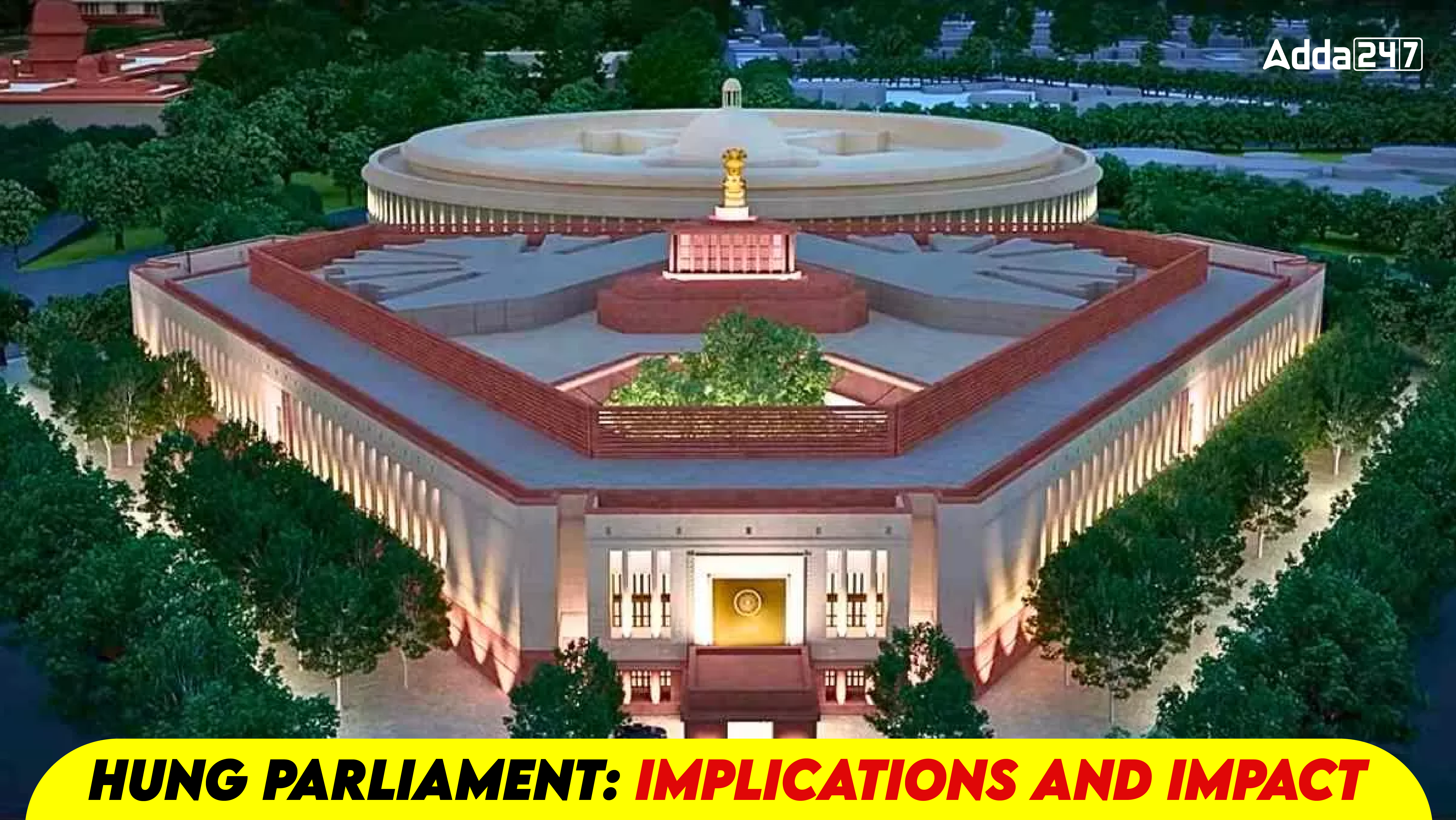Table of Contents
The Supreme Court’s notice on a petition advocating for elections to be declared “null and void” if the majority of votes are cast for “None of The Above” (NOTA) has significant implications for electoral processes, akin to the scenario of a Hung Parliament. In a Hung Parliament, no single party secures an absolute majority, leading to a situation where no clear winner emerges, necessitating coalition building or fresh elections. Similarly, if NOTA secures the majority, it reflects a collective rejection of all candidates by the electorate, indicating a demand for new, more acceptable choices. This mechanism could enforce accountability and ensure that elected representatives genuinely reflect the voters’ preferences, potentially leading to more democratic and satisfactory electoral outcomes.
Definition of Hung Parliament
A Hung Parliament refers to a situation in which no single political party or pre-election coalition secures an absolute majority of seats in the legislative body. This means that no party has enough seats to form a government outright, leading to a balance of power where no party can control the executive branch independently. The term is commonly used in Parliamentary systems such as those in the United Kingdom, Canada, and India, and it often results in a need for coalition governments, minority governments, or even fresh elections.
Historical Context and Frequency in India
The concept of a Hung Parliament is relatively recent in Indian politics, emerging prominently in the late 20th century. After India gained independence, the Indian National Congress (INC) dominated the political landscape, winning several consecutive elections with comfortable majorities under the leadership of Jawaharlal Nehru and later Indira Gandhi. This dominance lasted until the 1977 elections, which resulted in a Hung Parliament. The Janata Party formed the government, marking a significant shift in Indian politics.
The 1990s saw a surge in hung parliaments, characterized by political instability and frequent changes in government. The period witnessed the collapse of several short-lived governments, such as those led by H.D. Deve Gowda and I.K. Gujral, due to a lack of stable support in the parliament. This era highlighted the challenges of managing a government without a clear majority, culminating in the relatively stable but coalition-dependent Vajpayee government.
Causes of a Hung Parliament
-
Strength of Regional Parties
One of the primary causes of a hung parliament in India is the increasing strength of regional parties. Over the years, regional parties have gained significant influence in National politics, often securing a substantial number of seats in the Lok Sabha. For instance, in the 1989 general elections, regional parties secured 27 seats, which increased to 159 seats by 2004. This fragmentation makes it difficult for any single National party to achieve a majority, necessitating coalitions that can be fragile and short-lived.
-
Low Election Turnout
Another contributing factor is the consistently low voter turnout. Since India’s first general election, the average turnout has been around 60%. This low participation rate can dilute the vote share of National parties and enhance the influence of regional parties, increasing the likelihood of a Hung Parliament.
Implications of a Hung Parliament
-
Political Instability
A Hung Parliament often leads to political instability. National parties negotiate with regional parties to form a coalition government. These negotiations can lead to unfair practices and compromises, resulting in a government that might lack coherence and stability. The uncertainty surrounding such governments can erode public trust and lead to a perception of political instability.
-
Impact on Trade and Commerce
Economic policies and strategic planning can suffer under a Hung Parliament. The lack of a stable government can create uncertainty in markets, as evidenced by the 2004 Lok Sabha election results when the stock market dropped by 900 points. Businesses and investors generally prefer stable governments that can ensure continuity and predictability in policy-making.
-
Minority Governments
When coalitions form after a Hung Parliament, they often lead to minority governments. These governments, lacking outright majority support, can struggle with decision-making and are frequently subject to opposition pressures. This scenario can result in short-term policy decisions aimed at satisfying coalition partners rather than focusing on long-term National interests.
Role of the President
In the event of a hung parliament, the President of India plays a crucial role. The President may invite the leader of the largest party or coalition to form a Government and prove their majority on the floor of the House. If no party can form a stable government, the President might call for fresh elections. The recommendations of the Sarkaria Commission guide the President’s actions in these situations, emphasizing the formation of a stable government while respecting democratic principles.
Conclusion
Hung Parliaments, though not ideal, have become a recurring phenomenon in Indian politics. They reflect the fragmented nature of the electorate and the growing influence of regional parties. While they pose challenges, including political instability and economic uncertainty, they also highlight the dynamic and pluralistic nature of Indian democracy. Understanding the causes and implications of hung parliaments is essential for navigating the complexities of coalition politics and ensuring effective governance in a diverse political landscape.



 TSPSC Group 1 Question Paper 2024, Downl...
TSPSC Group 1 Question Paper 2024, Downl...
 TSPSC Group 1 Answer key 2024 Out, Downl...
TSPSC Group 1 Answer key 2024 Out, Downl...
 UPSC Prelims 2024 Question Paper, Downlo...
UPSC Prelims 2024 Question Paper, Downlo...
